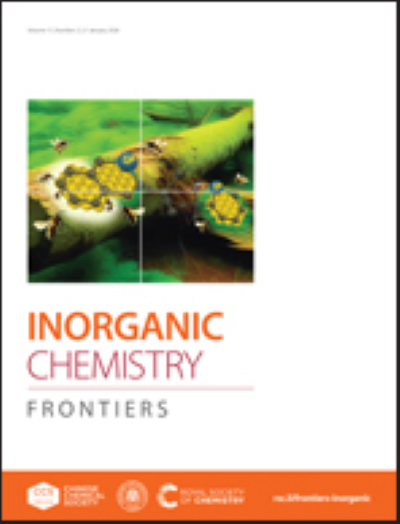Electronic State Modulation via Electrochemical Reconstruction Enhances Dilute Nitrate-to-Ammonia Reduction Efficiency
IF 6.1
1区 化学
Q1 CHEMISTRY, INORGANIC & NUCLEAR
引用次数: 0
Abstract
The electrochemical reduction of NO3- to NH3 represents a promising approach for producing a renewable fuel with high energy density. However, the problems such as low activity and/or selectivity in low-concentration solutions (≤100 ppm NO3--N) and instability of active sites still require to be overcame. In this work, Cu/ZnO heterostructure composite materials were synthesized for NO3RR. During the electrocatalysis process, the Cu/ZnO undergoes electrochemistry-driven structural reconstruction, generating CuZn bimetallic alloy phase. Under the dilute NO3--N solution of 100 ppm, the optimal Cu75Zn25 catalyst displays a FENH3 of 94.1% at -0.7 V vs. RHE, and a high NH3 yield of 414 mmol h-1 gcat-1. Density Functional Theory calculations and a series of characterizations unveil that the CuZn alloy phase alters the electronic state surrounding Cu, leading to the regulation of Cu d-band center and thereby optimizing the adsorption of intermediates. Meanwhile, forming new alloy phase inhibits the competitive HER as well. This study shows the prospect of CuZn composite catalyst in sustainable NH3 synthesis, which is convinced of having certain guiding significance for the efficient and eco-friendly conversion of effluents in the future.通过电化学重构的电子状态调制提高稀硝酸盐还原成氨的效率
电化学还原NO3-生成NH3是生产高能量密度可再生燃料的一种很有前途的方法。然而,在低浓度溶液(≤100 ppm NO3—N)中的低活性和/或选择性以及活性位点的不稳定性等问题仍然需要克服。本文以NO3RR为原料合成了Cu/ZnO异质结构复合材料。在电催化过程中,Cu/ZnO发生电化学驱动的结构重构,生成CuZn双金属合金相。在100 ppm的NO3—N溶液中,最佳Cu75Zn25催化剂在-0.7 V / RHE条件下,NH3收率为94.1%,NH3产率为414 mmol h-1 gcat-1。密度泛函理论计算和一系列表征揭示了CuZn合金相改变了Cu周围的电子态,导致Cu d带中心的调节,从而优化了中间体的吸附。同时,新合金相的形成也抑制了HER的竞争。本研究显示了CuZn复合催化剂在NH3可持续合成中的应用前景,相信对未来废水的高效环保转化具有一定的指导意义。
本文章由计算机程序翻译,如有差异,请以英文原文为准。
求助全文
约1分钟内获得全文
求助全文
来源期刊

Inorganic Chemistry Frontiers
CHEMISTRY, INORGANIC & NUCLEAR-
CiteScore
10.40
自引率
7.10%
发文量
587
审稿时长
1.2 months
期刊介绍:
The international, high quality journal for interdisciplinary research between inorganic chemistry and related subjects
 求助内容:
求助内容: 应助结果提醒方式:
应助结果提醒方式:


